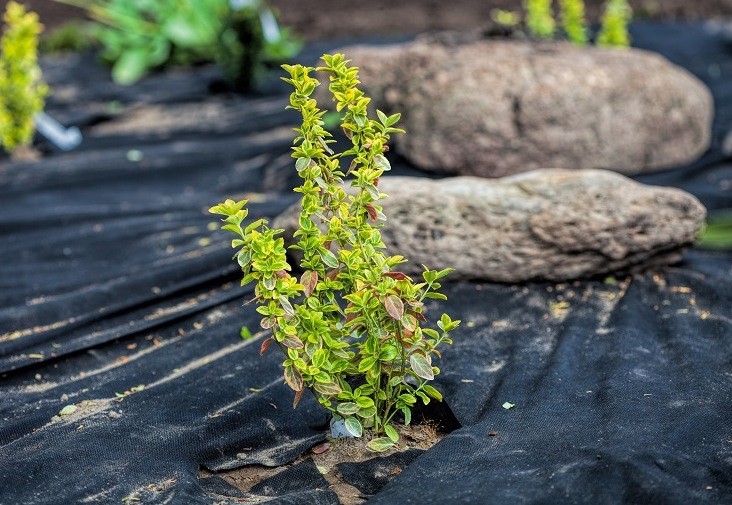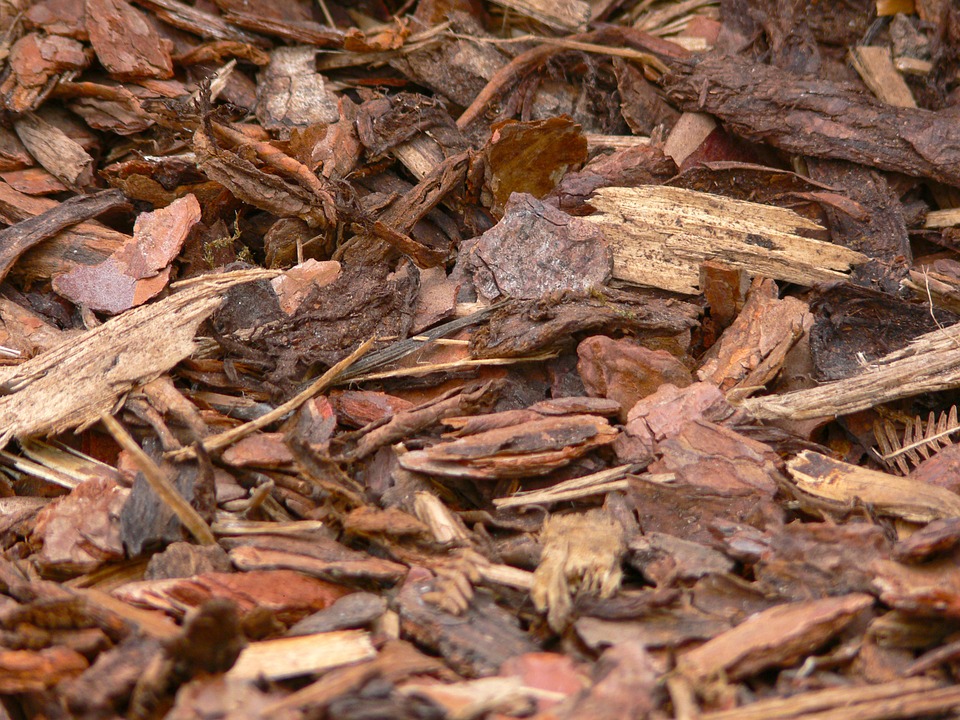Condensed Version of this Article
- Prevent weeds with organic mulch, crushed stone, black plastic, or landscape fabric
- A 2-3” inch layer of mulch or stone is effective against weeds
- Kill existing weeds with organic ‘Burnout’
- Rake off roots, twigs, and rock from gardens before using fabrics
- Use Garden Staples to hold the fabric in place at the edges and seams
- Cover fabric with 2” inch layer of mulch, wood chips or stone when pinned down
- Free Gardening Classes held every Saturday @ 9:30am here at Watters Garden Center

Weeds are an ever-present garden problem for mountain landscapes. The wind blows smaller, lighter weed seed into our yards and pushes along heavier seeds, too. Be aware that weed control is a game in which you can stay ahead, but never fully win. Weeds are just too persistent to give up!
Here are the best methods to at least reduce the number of weeds, and make remaining weeds easy to pull.

Organic mulch in a 2-3” layer of pine needles or compost inhibits the
growth of most weeds. However, as
organic materials decompose, they become fertile ground for everything that
grows, especially weeds. So annually add
an additional layer of organic mulch to reinstitute that natural weed
prevention.

Crushed stone will not decompose and is classified as an inorganic
mulch. Like organic mulch, a 2-3” layer of stone is required to prevent
weeds. Stone eventually works its way
into landscape soil and is very difficult to remove when a landscape remodel is
in order. Dust and dirt also settle
between rocks that ultimately allow weed seeds to germinate. Stone can also be hard to keep clean when
leaves become trapped between the rocks.
It also draws considerable heat into the soil which is tough on plants.
Black plastic will not decompose like crushed stone and is very easy to
clean. The Arizona sun sears through and
eventually tears all plastics, so stick with black plastic of 10mm
thickness. Be aware that plastic
presents some serious drawbacks for gardens.
Plastic suffocates soil preventing rainwater, along with vital nutrients
essential for proper plant growth, from penetrating garden soil; plus, it draws
heat like crushed stone. For these
reasons, I personally do not use plastic in a garden.
Landscape fabric is like black plastic, but without suffocating the
soil. It allows moisture and nutrients
into the garden while inhibiting weeds.
Landscape fabric comes in any desired width in two types of fabric; spun
and woven. Woven fabrics seem to hold up better in mountain landscapes,
especially when topped with decorative stone.
Preparing Ground for Landscape Fabrics ~
Spray the existing weeds with organic ‘Burnout’, so your landscape starts out weed free. Rake twigs, roots, and stones out of the soil where the fabric will be laid to prevent puncture holes in the barrier. Punctures are especially possible where javelinas, dogs, and people may use the area.
Existing landscape plants can have fabric lying around the trunk of each plant without affecting plant health. Cut slits in the fabric where plant space is needed and neatly tuck the flaps around each plant. Do not allow the material to bunch up at the base of plants; slice away any extra fabric.
Laying fabric for new garden beds is a straightforward operation. Positioning fabric in a 6”- inch overlapping pattern will prevent weeds at the seams. When the landscape fabric is fully laid out neatly cut X-shaped patterns where plantings will be placed.
The better brands of landscape fabric are UV-stabilized and last for years even when exposed to direct sun. A 2”- inch layer of mulch, wood chips, shredded bark, or stone is recommended as a cover over exposed fabric to prevent
Garden fabric pins, aka staples, should be used at fabric edges and

For really intimidating weed jobs or massive landscape cleanups, contact Jonny’s Tree & Landscape
Service (928) 830-4977.
Let them know Ken sent you:)
Free Gardening Classes every Saturday, 9:30am at Watters Garden
Center:
February 23 @ 9:30 am – Succulent and
Cactus Container Design
March 2 @ 9:30 am – Combatting Insects and the “Fungus Among Us”
Until the next issue, I’ll be helping gardeners here at Watters Garden Center.
Ken Lain can be found throughout the week at Watters Garden Center, 1815 W. Iron Springs Rd in Prescott, or contacted through his web site at WattersGardenCenter.com or FB.com/WattersGardenCenter .

